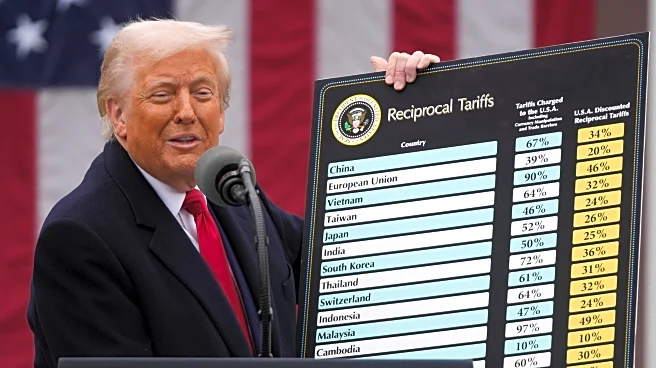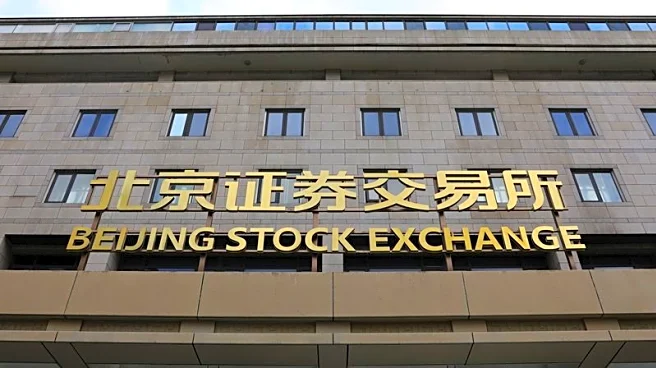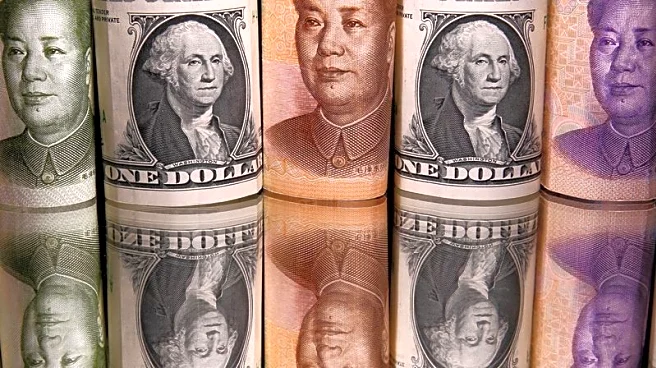What's Happening?
China has strengthened the official yuan midpoint to its highest level in nearly a year, setting it at 7.1007 per dollar. This move comes amidst ongoing trade tensions between Beijing and Washington. The People's Bank of China (PBOC) made this adjustment prior to market opening, marking the strongest rate since November 6, 2024. The official guidance rate was 203 pips firmer than a Reuters estimate of 7.1210. Market participants view this firmer-than-expected fix as an attempt by China to stabilize the yuan, according to traders.
Why It's Important?
The strengthening of the yuan by China's central bank is significant in the context of ongoing trade tensions with the U.S. A stable yuan can help mitigate the impact of tariffs and trade barriers, potentially easing economic pressures on Chinese exports. This move may also reflect China's strategic positioning in global trade negotiations, signaling its resilience and readiness to maintain economic stability despite external pressures. The decision could influence currency markets and affect international trade dynamics, impacting businesses and economies reliant on Chinese imports and exports.
What's Next?
The adjustment in the yuan's midpoint may lead to further scrutiny from U.S. policymakers, who have previously accused China of currency manipulation. As trade talks continue, both nations may seek to leverage currency policies to gain advantages in negotiations. The PBOC's actions could prompt responses from other central banks, potentially affecting global currency exchange rates. Stakeholders in international trade and finance will likely monitor these developments closely, anticipating potential shifts in trade policies and economic strategies.
Beyond the Headlines
China's move to strengthen the yuan could have long-term implications for its economic strategy and international relations. By stabilizing its currency, China may be aiming to enhance its global economic influence and attract foreign investment. This decision also highlights the complex interplay between currency policies and geopolitical tensions, underscoring the importance of economic stability in maintaining international partnerships and trade agreements.












